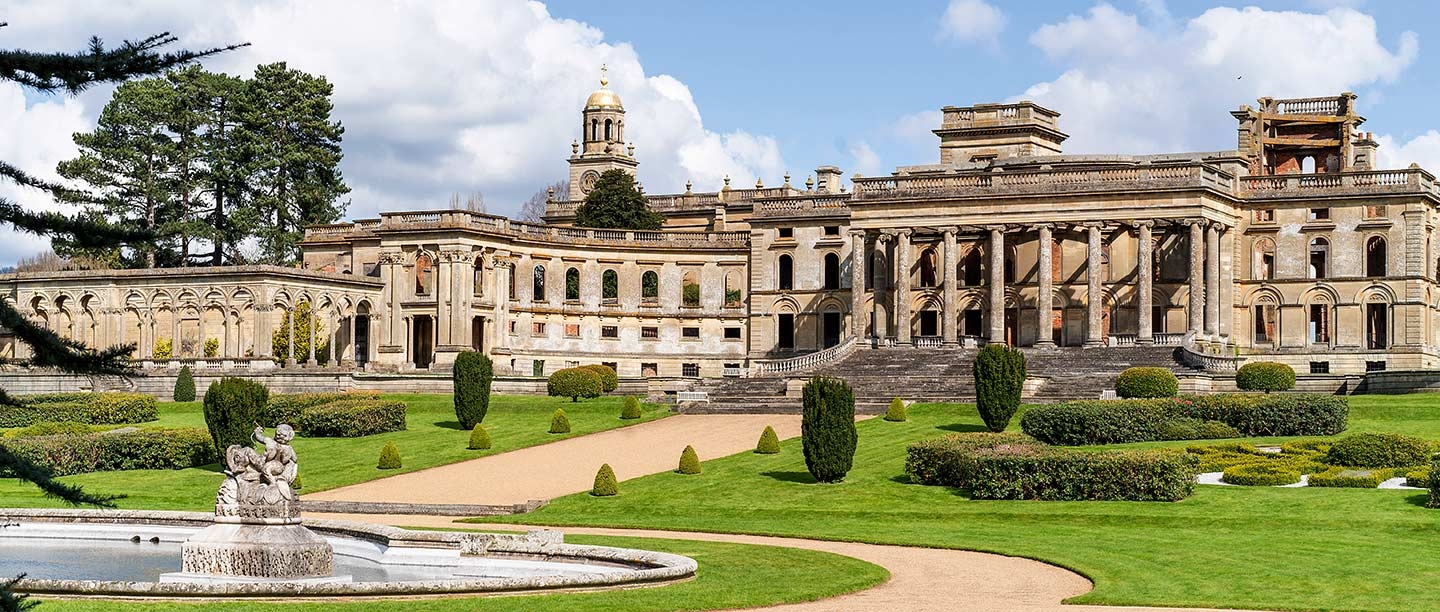Early history
The manor of Great Witley is first recorded in the mid 13th century, when it belonged to Hugh Cooksey. In 1498 or 1499 Robert Russell of Strensham, of a Worcestershire gentry family, inherited it.
Around 1624 the manor passed to Sir William Russell, who was a prominent figure in Worcestershire, serving as a JP and sheriff. Originally, there was a small manor house here. It was probably timber-framed, but it had a chamber over a stone undercroft, which survives within the basement of the present house. Probably sometime before 1630 Sir William replaced the house he had inherited with a grand mansion.
During the English Civil War Sir William took a leading part in the Royalist cause in Worcestershire, serving as Lieutenant-Colonel of the King’s Horse. Despite being on the losing side, the family survived the conflict with their estates intact. In 1654 William gave Great Witley to his son Thomas as a wedding present. The following year Thomas sold it to Thomas Foley of Stourbridge, heir to a fortune made in the West Midlands iron industry. Witley would be closely associated with the Foleys for nearly two centuries.
The Foley family
The Foleys’ fortune originated with Thomas’s father, Richard Foley of Stourbridge, the son of a nail-maker in Dudley. In the 17th century the West Midlands was full of forges producing iron in small quantities. Over time Richard Foley built a business as a forge master. In the mid 17th century he and Thomas developed an integrated business on a large scale, mining iron in Staffordshire and the Forest of Dean and smelting it in blast furnaces to make pig (or crude) iron. They also forged and milled the iron, becoming one of the biggest suppliers of the basic materials – cast and wrought iron – to hundreds of smiths of all kinds.
When Thomas married Anne Browne, heiress to an ironfounder, he went into business with his father-in-law, supplying cannon to the Cromwellian navy. He died in 1677 a wealthy man. His three sons all followed him into the business.
The eldest son, Thomas Foley II, inherited the Witley estate, and was succeeded in 1701 by his son Thomas. Thomas III went into Parliament and was later made Lord Foley of Kidderminster. He enlarged the house at Witley significantly, though little of his work is visible today.
He died in 1733, but his widow and his son Thomas IV rebuilt the neighbouring parish church with the Baroque interior for which it is famous today. Thomas IV also carried out major landscaping works at Witley, creating the lake or Front Pool north of the house.
The later Foleys
When Thomas IV died unmarried in 1766 his estate passed to a cousin, also called Thomas Foley (1716–77), who in 1776 became 1st Lord Foley of the second creation. By this time the Foleys were very wealthy landowners, but had withdrawn from the iron industry.
The 2nd Lord Foley, another Thomas, was a notorious gambler and spendthrift, which placed his estates under great financial strain. Under his son, the 3rd Lord Foley, the family’s fortune partially recovered, helped by an advantageous marriage in 1806.
Around this time he carried out a major remodelling of Witley Court to designs by John Nash, the Prince Regent’s favourite architect. Two great porticos were added to the house, which was clad in white-painted stucco in a fashionable Regency style. The park was landscaped, perhaps to designs by Humphry Repton.
But the cost of all this, and the Foleys’ extravagant lifestyle, eventually forced the 3rd Lord to sell up. In 1837 the trustees of William Ward (1817–85), 11th Baron Ward of Birmingham, bought the house, park and estate for the vast sum of £680,000.
The Ward–Dudley Family
In 1837 the heir to Witley was still a minor. He was also the designated heir to the vast fortune left by a relative, John Ward, 1st Earl of Dudley (1781–1833), who had briefly served as Foreign Secretary in 1827–8. The Ward fortune was derived mainly from the iron and coal industries of Staffordshire, as well as from plantations worked by enslaved people in Jamaica. It made William heir to one of the greatest fortunes in Britain, with an annual income from the Ward estates of over £100,000. But under the terms of the 1st Earl’s will he only gained control of it in 1845, at the age of 28.
In April 1851 the new Lord Ward married a society beauty, Selina Constance de Burgh, but she died just seven months later giving birth to a stillborn child. The widowed Lord Ward threw himself into rebuilding Witley Court (see below). In 1860, around the time the transformation was complete, the Earldom of Dudley was revived for him. Five years later, aged 48, he married the 19-year-old Georgina Moncreiffe, who became a celebrated society beauty. The couple had six sons and one daughter, who were brought up at Witley.
Although Lord Dudley never played a prominent role in public life, he sought to do some good with his vast wealth. He tried to improve living standards on his estates, built churches and schools, and paid for the external restoration of Worcester Cathedral and for a new hospital for Dudley. He was also a great art collector.
When Lord Dudley was disabled by a stroke in 1883, Georgina assumed control of the family, household and fortune. Lord Dudley died in May 1885, and in 1891 Georgina left Witley to make way for her eldest son, William, 2nd Earl of Dudley, on his marriage to Rachel Anne Gurney, a banking heiress.
Witley Court transformed
William Ward carried out a dramatic transformation of Witley Court between about 1855 and 1860. As his architect he chose Samuel Daukes (1811–80), an eclectic designer who worked in the Gothic, Tudor, Greek Revival and Italian classical styles. Daukes was involved in property development in Cheltenham and had designed numerous Gothic churches. Lord Ward became his greatest patron.
Daukes retained the shell of the Foley house, including the huge porticos. He removed Nash’s stucco facing, and instead faced the house with Bath stone, with Italianate detailing around the windows and in the cornices and balustrades. Much of the plan remained the same, but the main reception rooms were decorated in the lavish ‘Louis XV’ style, based on mid-18th-century French interiors.
The climax of the interior was the ballroom, created from the Foleys’ library in the east wing. Witley was designed for lavish entertainment, more like a grand London house than a typical country house. The huge service wing with its three courtyards that John Nash had added for Lord Foley was retained, with various alterations. The most important addition to the house was a curved wing on the south front, leading to a vast conservatory.
Dudley’s fortune also funded the creation of an ornate formal garden at Witley designed in the 1850s by William Andrews Nesfield, the leading garden designer of his day, to complement the remodelled mansion. Nesfield described the gardens at Witley Court as his ‘monster work’. His additions included grand formal parterres and the Perseus and Andromeda fountain.
The 2nd Earl and Countess
From 1891 until 1902 the 2nd Earl and Countess regularly resided at Witley. They entertained there on a grand scale, with lavish house parties. There were great shooting parties on the estate, and the Prince of Wales stayed several times.
The couple were away for most of 1902–5, when Lord Dudley was Lord Lieutenant of Ireland, and in 1908–11 when he was Governor-General of Australia. Rachel became known for her public service and charitable work.
However, Lord Dudley had affairs with other women, and by the time the couple returned from Australia their marriage was effectively over. They formally separated in 1912. Rachel was given a stipend and a life tenancy of Witley Court. She loved Witley, but the separation, her reduced income and the First World War meant that life there was not the same as it had been previously.
On 26 June 1920 Rachel drowned while bathing in the sea at Connemara in the west of Ireland, aged 52. Her sudden death was a turning point for Witley Court.
Sale and decline
After his wife’s death, Lord Dudley immediately decided to sell the whole Witley estate. The family’s industrial fortune, based on the iron and steel industries, was prospering, but the earl had already sold most of his estates in Scotland, Wales and Jamaica. Between the 1920s and 1940s most of the family’s remaining property in England was sold off in turn, including the core estates around Dudley Castle and Himley Hall in Staffordshire. Most of the Witley estate was sold to unknown buyers, while the core estate, the house and almost all its contents were bought by Sir Herbert Smith, a carpet manufacturer from Kidderminster.
Sir Herbert made one major change at Witley: he installed an electric dynamo system in the former coach houses, to provide electric light and power. However, he did not move in high society, and lived at Witley much more modestly than the Dudleys.
On 7–8 September 1937, the house suffered a devastating fire. Half the central block and the east wing were gutted. The west wing and the sprawling service wings were unaffected, and most of the contents were salvaged. But the task of restoring the house was too much for Sir Herbert to contemplate. The sale of the contents in 1938 lasted seven days. Sir Herbert moved away, and died in 1943. Witley seemed doomed.
Ruin and revival
During the Second World War, the buildings around Witley’s service courtyards were occupied by a jam factory. But the rest of the house was falling into ruin, and the gardens were overgrown.
In the 1950s and 1960s the then owner, a Mr Wigginton, an antique and scrap dealer, sold off various pieces of carved stonework and other features and building materials. The magnificent Perseus and Andromeda fountain was even offered for sale. Bing Crosby expressed an interest in buying it for a club-resort he was planning, but fortunately this did not happen.
By this time the shell of the house was in a dire state, with trees growing inside, and in danger of demolition or collapse. In 1972 the Department of the Environment took the house and grounds into state guardianship to preserve them. It carried out major repairs, which included installing concrete floors at ground-floor level in the main block and east wing. A reinforced concrete frame was built within the eastern tower to save it from collapse.
In 1984, Witley Court was transferred to the newly formed English Heritage. The organisation commissioned several rounds of archaeological survey and investigation, to understand the house and its setting. In the 1990s English Heritage undertook a major restoration of the formal gardens, culminating in the restoration of the Perseus and Andromeda fountain to operation in 2002 – a triumphant conclusion to this phase in Witley’s revival.
Related content
-
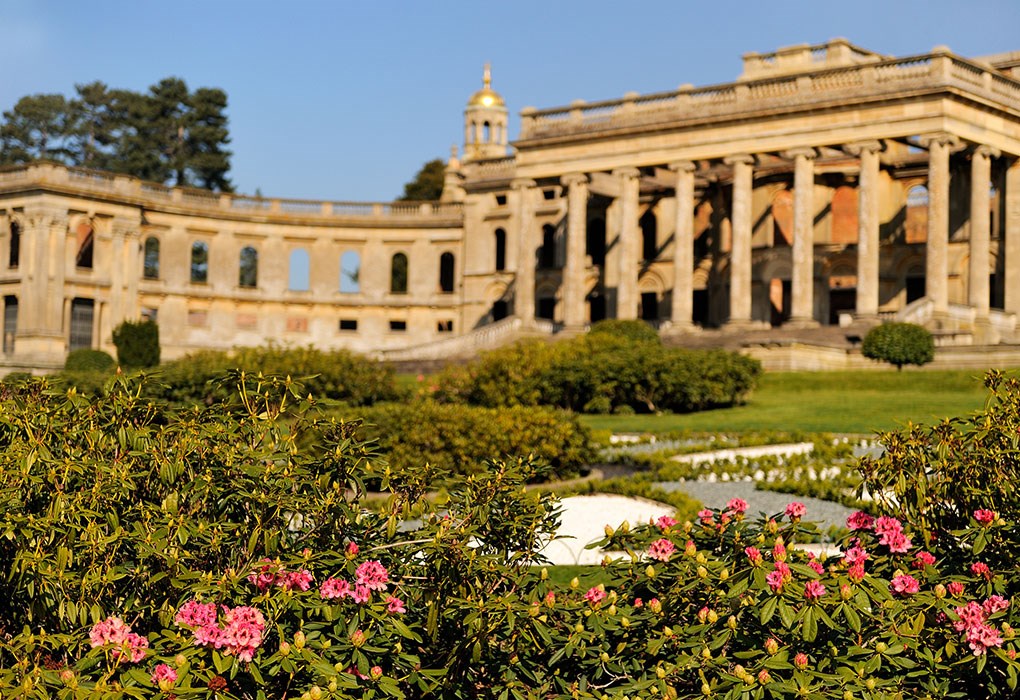
Visit Witley Court and Gardens
A hundred years ago, Witley Court was one of England's great country houses, hosting many extravagant parties. Today it is a spectacular ruin, the result of a disastrous fire in 1937.
-
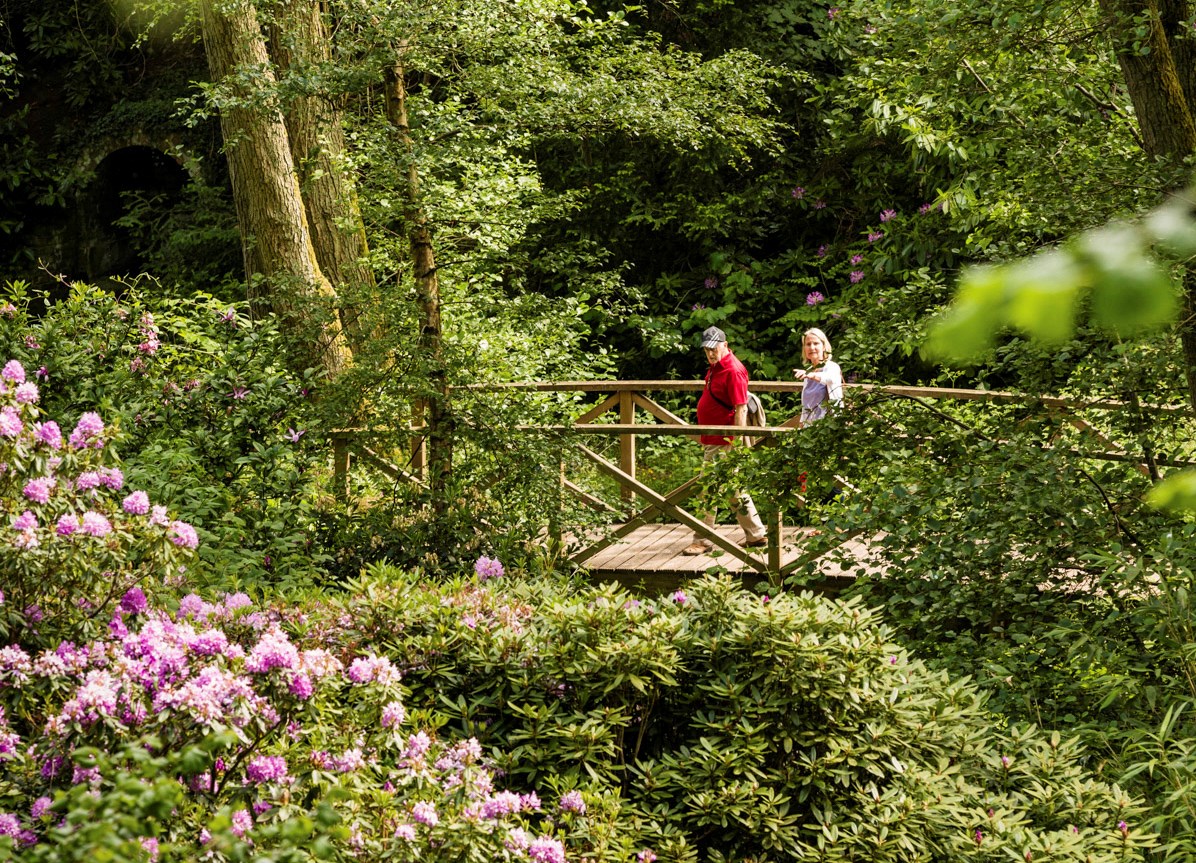
Discover the gardens
A spectacular lake, a vast fountain and a colourful French parterre are just some of the highlights of what was one of the grandest estates in England.
-
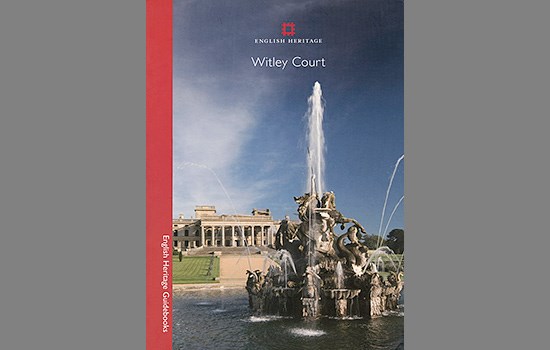
Buy the Witley Court guidebook
The guidebook to Witley Court offers a full tour and history of the house and gardens, lavishly illustrated with historic photos and reconstruction drawings.
-
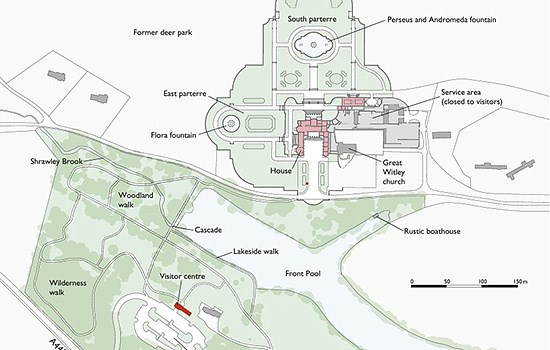
Download plans of the house and gardens
Download this pdf to see plans that show how the house developed over time, and to see the layout of the gardens.

